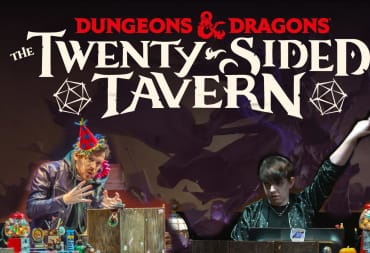It's impressive how quickly an industry can change in a decade. For The Chinese Room, this is exemplified by their first commercial title: Dear Esther. New developers break into the industry quite often, but the circumstances surrounding this title couldn't be replicated today. A small team debuting a Source Engine mod in 2008 that's repurposed into a full release years later was still a novelty. Other small games had been paring back traditional mechanics too, such as Jason Rohrer's Passage or Tale of Tales' early releases, but something about Dear Esther's timing solidified the "walking sim" sub-genre to the average audience.
What also makes its entry unique was the fervent discourse around games as an artistic medium. Dear Esther's timeline from hobbyist mod to full-fledged game took place during Roger Ebert's infamous "Games can never be art" article and the precipitating fallout from that. So, there's also this desperate, if well-intentioned, cultural pushback from "art games" trying to earn some nebulous form of legitimacy. But now that the dust has settled on that topic, and as The Chinese Room ported it to 8th-gen consoles under the quasi-pompous Landmark Edition subtitle, it's interesting to consider its legacy today. Whether measured on its own or compared to various successors, this landmark is more tattered and moss-ridden by consistently disregarding one crucial element: player involvement.
This post contains spoilers for Dear Esther.
The Iceberg Theory In Game Design

This ghost story begins by showcasing its epistolary story structure as this unnamed man reads out a letter to his dead wife, Esther. Only a few yards from your starting point lay a rundown cabin and lighthouse. Whether by magic, fate, or something else, you've arrived at this unnamed Hebridean island and are compelled to saunter forward to learn more about this situation and Esther. When considering that pull along with this English narrator's colorful monologues, I'll admit it's a decent hook.
Of course, this hook comes to a screeching halt by the game itself feeling so restrictive and uninviting. The term "walking sim" (also considered "narrative adventures" today) blew up here because of how gameplay can be summarized: walk with the W key or control stick, reach an invisible trigger for another "Dear Esther..." letter read aloud, feel emotions, and repeat. Even simplistic interactions like crouching or turning on your flashlight are handled automatically. There's not even the option to jog, so you're at "ambling dotard" speed the entire time. No loose items can be picked up and examined either; it's like being encased in an upside-down jar and the glass barring you from touching anything on the guided tour.
In Creative Director Daniel Pinchbeck's own words, that's essentially the point.
"In reality, a lack of stimulation does not equate to a lack of experience. In fact, a lack of stimulation allows for other experiences to grow. You can’t feel rage slowly and you can’t feel loss fast. In Dear Esther, we found that the less hand-holding we did the more the experience intensified."
The way he condemns over stimulation always reminds me of Ernest Hemingway's Iceberg Theory: omitting as much of a story's greater meaning in plain writing so it can shine through by what's implied. This short story attributed to him (but isn't substantiated) comes to mind: "For sale: baby shoes, never worn." In just six words anyone can infer the pain etched into that final part: the unplanned death of an infant. In a similar vein, can this ethos of removing surface-level expectations (basic mechanics/control inputs) make way for players to feel more involved with what's below the iceberg's surface?
For many critics and users alike, those self-imposed limitations were vaunted as an avant-garde triumph for the medium. But this wasn't universally the case. As someone who'd been greeted with high praise from fans on websites or ad hominems from those decrying tougher critics, there'd often been one go-to retort about Dear Esther's shortcomings: "You just don't get it."
What’s Not To Get?

Whatever response against "over-stimulation" as Pinchbeck gives -- which has some merit -- the inverse can apply even more. Taking a deliberately paced trek around an island only to net randomized, abstruse circumlocution at specific thresholds feels more stifling than illuminating. Such overbearing strictures make me wonder what's the point of playing to begin with, rather than reflect about the story’s deeper implications. It’s an attitude similar to playing third-wheel on a poncey drama student’s date; imagine willingly subjecting yourself to that.
Admittedly, several lines evoke a grander tragedy that's rife with unique symbolism and an expansive vocabulary -- especially for a game; conversely, several biblical references and artsy allusions comparing the island to body parts are pretentious. I try not to use that criticism lightly, but when you're etching a long sentence across a cliffside -- essentially requiring a notepad to even jot it all down -- and amping up highfalutin metaphors in tandem... well... I'm safe to assume you're routinely checking up on your colon.
This exasperation gets worse when considering most (if not all) monologue nodes select disparate narrations across playthroughs; effectively, you’re at the mercy of a slot machine and trying to connect the dots yourself. You could argue that creates an impetus to replay and fully understand its deeper meaning. To me, that attitude impinges engagement in critical ways:
1. If many lines on a first playthrough seem cryptic and grandiloquent for their own sake, why should I gather up the patience to trudge through it again? Part of the joy in revisiting narratives comes from tangible inferences missed the first time, not smarmy obfuscation via a roulette wheel.
2. The dangers of contradictory emotions between playthroughs can make any artistic intentions more indecipherable. One example of this came towards the end for me. First time through, the narrator was comparing his situation to that of Lot and his wife (The Book of Genesis); second time at the same junction, it details random factoids about another unseen character and his actions.
Since the original mod's design tried exploring how players react to a game’s story with no conclusion, it's no surprise to see people come to wildly different interpretations.
Although that academic exercise is interesting to consider given its reception, where do I -- the player -- fit in? The prevailing attitude I sense when reaching the end is ambivalence. Work was certainly done in building an atmosphere, but that alone isn’t enough. Upon taking my initial steps into a game's world, I want to feel like I'm inhabiting it to some extent. Taking the radical extent of The Iceberg Theory and grinding any semblance of interaction to the bone is counterintuitive to the main idea of an interactive medium. For all the mud-slinging towards hand-holding blockbuster shooters, I don't buy why any heuristic walking sims without a tangible sense of discovery wouldn't net more acrimony.
Successes & Successors

Aside from giving credit to some of Dear Esther's lyrical tapestry, I've been jabbing it pretty hard. Why these issues spill out is partly because its better qualities deserved a better game. Even before Landmark Edition shifted the game engine from Source to Unity 5, it was a visual stunner. Obviously it had technical limitations, but graphics hold up by disregarding pixel counts and instead interweaving a furtive, dour mood throughout the entire island. This careful geography-crafting is complemented by Jessica Curry's well-rounded soundtrack and Nigel Carrington's excellent voice acting too. Even the most ostentatious lines were pleasing to hear thanks to Carrington consistently capturing the right mood.
These standalone qualities deserve due respect, but it goes to show how diminished they can feel without proper design. As years have passed, other examples have found a better balance: Gone Home, The Stanley Parable, and What Remains of Edith Finch to name a few. At times, the ideals and messages within many of those early "art games" are incredibly earnest; however, those later titles capture an audience with greater enthusiasm by respecting the original motivations of walking sims whilst stimulating the player's involvement in different ways.
Today, Dear Esther's argued landmark achievements of its time feel very much of its time. The Chinese Room went on to lead development for a less-successful Amnesia sequel and the interminable walking returned in 2015's Everybody's Gone To The Rapture. A buyout from Sumo Digital later, they've so far returned with a VR experiment and a traditional platformer-adventure being ported to consoles & PC. A vanguard of this sub-genre bowed out long ago.
Even if not the official start of walking sims, Dear Esther remains the putative hallmark of a specific short-lived era. For me, its lasting effect is one of presenting a sophisticated challenge of what to expect in a game while stumbling on the most elementary methods of retaining player attention. Better examples have been released since, but some credit is still due to being among the first.
Have a tip, or want to point out something we missed? Leave a Comment or e-mail us at tips@techraptor.net











